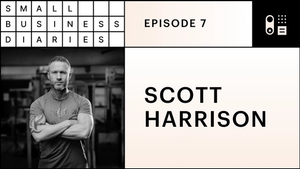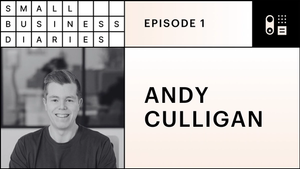Acquiring a new customer can cost five to seven times more than keeping an existing one. Yet for many small business owners, most of the effort still goes into chasing new leads.
That focus comes at a price.
When loyal customers don’t hear from you – or feel unappreciated – they slowly slip away. Not with a bang, but a quiet churn that adds up month after month. Meanwhile, the real growth opportunity might be right under your nose: the customers already buying from you.
In this guide, we’ll walk through seven practical customer retention strategies tailored for small businesses. Each one is designed to help you keep more of your paying customers, boost loyalty, and protect your revenue – all without bloated tools or complicated processes.
Why is customer retention important for small businesses?
It’s cheaper than chasing strangers
Winning over new customers costs a lot – as previously mentioned anywhere from five to seven more than keeping the ones you already have. With loyal customers, you skip the ads, the pitches, and the endless follow-ups. Instead, you invest once and get returns again and again.
They spend more (and stick around longer)
Repeat customers don’t just come back – they spend up to 67% more than first-timers. They already trust your product, so they’re more likely to explore, upgrade, or buy again without a nudge. It’s the repeat business that keeps the lights on when things get quiet.
Small changes bring big results
Even a 5% increase in retention can raise your profits by 25–95%, depending on your business. You don’t need a complete overhaul – just a few smart tweaks to how you communicate, follow up, or reward loyalty.
7 simple customer retention strategies for small business
Keeping your best customers around isn’t always easy—but it’s one of the smartest things you can do. Strong retention leads to steadier revenue, better word of mouth, and less stress chasing the next big sale. Here are seven practical strategies you can start using today.
1. Check in regularly – without pushing a sale
Most businesses talk to their customers only when they want something: a review, a sale, or a referral. But real loyalty comes from conversations that aren’t about selling.
A short, friendly email can go a long way: 'Hi Jane, we’re so glad you’ve been with us for 6 months! Just checking in — is there anything we can do better or help with?'
That kind of message reminds your customers that you're listening, not just selling.
How to do it:
- Use your CRM to set a reminder 3–6 months after a purchase or signup. Most CRM tools let you automate this, so it doesn’t fall through the cracks. Pick a cadence that feels natural — not too soon, not too far apart.
- Keep the email short and friendly. Think of it like a quick check-in from a friend, not a sales pitch. Ask one simple question like 'How’s it going with [product]?' or 'Is there anything you’d change if you could?'
- Don’t attach a coupon or try to upsell. The goal is to show you care, not to make another sale. Make it about the relationship, not the revenue.
- Include a personal tone or a small touch of humor. Like the email from Revue’s founder, you can add a fun GIF or a relaxed signoff:

Bonus ideas to keep in touch without annoying people:
- Send a birthday message with a small gift or offer — just a simple 'We’re thinking of you.'
- Run a short email survey asking, 'What could we do better?' and offer a small thank-you.
- Reconnect after long gaps — 'Hey, it’s been a while. Anything we can help with?'
- Use social media to comment on or repost your customers' content if they tag you.
None of these require a fancy budget — just attention, kindness, and a few minutes of your time. People stick with brands that treat them like humans, not order numbers. A little nudge of care is often all it takes to stop a churn before it happens.
2. Reward repeat customers (without giving away your profit)
Many small businesses skip loyalty rewards because they think they’ll eat into their margins. But here’s the truth: you don’t need deep discounts. A small gesture goes a long way — and it often pays off more than it costs.
Just look at The Grounds Café. They noticed how many loyal customers kept coming back, so they rolled out a simple loyalty card: buy 9 coffees, get the 10th free.

That one free drink? Barely a blip in cost. But the reward? More visits, stronger relationships, and a reason for customers to choose them over another café down the street.
You can do the same. Print stamp cards or use a free loyalty app. Offer something easy — a freebie, a discount, a little surprise after a set number of purchases. People love to feel noticed. And when the reward feels achievable, they’ll stick around to earn it.
Keep it simple:
- Choose a reward that fits your margins (like a free drink or small discount)
- Make the goal clear and attainable — 5 to 10 purchases is a sweet spot
- Talk about it often: post it on your socials, at checkout, or in your emails
It’s low-effort, low-cost, and high-impact. Customers feel rewarded for something they are already doing, and the business stays top of mind.
3. Personalize communication (without sounding like a robot)
Most small businesses think personalization means adding someone’s name to an email. But great customer retention starts with showing that you remember your customers — not just their name, but what they care about.
If someone always orders the same oat milk latte? Let them know when a new roast comes in. If a customer regularly buys craft supplies from your store, send them an invite to a local workshop or event. Personalization isn’t creepy when it’s useful — it just shows you’re paying attention.
Try these simple ideas:
- Segment your emails by interest. Got a mix of dog and cat owners? Send pet-care tips based on the tags in your CRM. (Yes, even a spreadsheet counts.)
- Send a 'you might like this' text or DM. If a product is back in stock or similar to something they’ve bought before, give them a quick heads-up.
- Add a notes column in your CRM. Include quick facts like 'coffee, no sugar' or 'buys every Friday.' It makes follow-up feel natural, not salesy. You can easily do it with Capsule CRM. Here’s a mini-template you can copy into your CRM or notebook:

Start filling this template in after every sale or conversation. In a month, you’ll have a clear idea of how to personalize messages without overthinking it.
Example: Chewy, the pet supply company, is known for sending handwritten notes and even custom pet portraits to customers. These small, unexpected gestures have resulted in thousands of social media posts and increased customer loyalty.

4. Offer exceptional customer service
Three out of four consumers say a bad business interaction can ruin their day.
Before loyalty, before repeat purchases, and before referrals — comes service.
For many small businesses, the reason customers return isn’t price or product.
It’s the way you made them feel.
When someone sends a message and hears nothing back, they remember. When they get a fast, friendly reply, they remember that too — and they come back.
Here’s how to deliver great service:
Respond faster without burning out
You don’t need to reply instantly. But a response within a few hours can make all the difference. Set aside 10–15 minutes a day to answer questions via email, DMs, or comments. Save time by writing quick replies in Notes or your CRM — then reuse them. Not online 24/7? Let people know your reply hours in your Instagram bio or auto-responder.
Make it easy to find answers
If customers always ask the same three questions, don’t wait for them to message you. You can pin FAQs on Instagram or Facebook, or add a simple FAQ section on your website.

Post a short Reel or Story highlight showing how your product or service works. It’s less about features, and more about showing the experience. People trust what they can see — and a quick walkthrough can answer questions before they’re even asked.
Follow up after a purchase or support ticket
A quick message like 'Did everything go smoothly?' can go a long way. It shows customers you care after the sale, not just before. It also opens the door to feedback or upsell opportunities naturally.
Turn mistakes into loyalty
If something goes wrong (a late order, a broken item), fix it fast — and add a small gesture as an apology. A personal email, freebie, or discount code can turn frustration into appreciation. Most customers remember how you handled the problem more than the problem itself.
Personal beats perfect
You don’t need scripts or automation to be great at service. Just be real – use your customer’s name if you know it. Say, thank you when someone places an order or shares feedback. Keep your tone friendly — even if the question is basic, or the answer is on your website.
5. Follow up without lifting a finger (and without sounding like a robot)
Do you know what kills repeat sales? Silence. When someone buys from you once, don’t let that be the last time they hear from you. A well-timed follow-up email or reminder can gently bring them back — without any extra effort on your end.
Example: Someone buys from your online store. Two weeks later, they get an automatic email saying 'Still loving your handmade soap? Here's a tip to make it last longer.'
SASSY SAINTS is a brand that does it wonderfully.

Why this email works (and how small businesses can steal the idea):
1. 'Save this email, it might help you later' = long-tail retention
This tiny line at the top turns a throwaway marketing email into something useful. It plants a seed: this might be handy next week. It encourages the reader to keep it, not just skim and delete.
For small businesses: You don’t always need to push a product. Send tips that are actually useful after the purchase – and clearly tell your customer why they should hang onto the email.
2. Instructional = helpful, not pushy
Instead of 'Buy more nail polish,' the email offers manicure instructions and tips. This makes the brand look like a helpful expert, not a salesperson.
For small businesses: Think, 'How can I help them get more value from what they already bought?' Example: '3 easy ways to store your coffee beans for longer freshness' or 'Tips for getting the most from your weekly planner.'
3. Single CTA that’s low-pressure
The button says 'Go to tips & tricks' — not 'Buy now.' That makes it feel safe to click, which keeps engagement up and builds brand trust.
For small businesses: Every email doesn’t have to close a sale. Some can simply build the relationship. That’s retention in motion.
How to apply this:
- After someone buys, schedule an automated tip-based follow-up email in 5–7 days. Send a message with a tip, bonus, or suggestion related to what they bought. ('Try storing your earrings in a cool, dry place to keep them shiny.')
- Use a clear subject line like 'Keep this handy – tips for getting the most from [product].
- Add a small note at the top like 'Save this, it might help later.
- Keep it short, skimmable, and friendly — like something you'd text a friend.
- After 30–60 days, nudge them gently. 'Running low on beans? Your favorite roast is still here.'

This type of follow-up feels personal — even when it runs on autopilot. And it’s the kind of light-touch effort that leads to higher retention without extra hands-on work.
6. Ask for feedback (and act on it!)
Feedback is gold. Not just for improving your business – but for keeping customers loyal. When people feel like you’re listening (and actually doing something about it), they’re more likely to stick around.
You don’t need a huge sample size to get started. A simple email or a one-click rating does the trick. What matters most is what happens next: showing you heard them and making changes where it counts.
When to get feedback?
- After onboarding – A quick check-in after the first week can help you catch early issues and improve first impressions.
- After a purchase or service – Customers are most engaged right after buying. Ask how the process felt or how the product is working out.
- When someone cancels or downgrades – It’s a chance to learn what went wrong, and maybe even win them back.
- After support chats – A short 'Was this helpful?' survey is easy to send and useful to review.
- When customers refer others – If someone’s spreading the word, ask what they love most. Then do more of that.
- After a big update or feature release – You’ll get quick feedback on what landed—and what flopped.
Pro tip: You don’t need to act on everything. But always respond or acknowledge the input. Even a 'Thanks for the heads up – we’re passing this along to our team!' goes a long way.
Real-world inspiration: Trader Joe’s makes feedback part of the shopping experience
You don’t always need surveys or forms to gather feedback. At Trader Joe’s, the team listens in person.
Store captains and crew members regularly chat with shoppers and offer product samples to understand what people actually want. When a customer in California tried a soy ice cream cookie and asked for it in her local Nevada store, it showed up on shelves not long after – and eventually across multiple locations.
By acting on this kind of feedback, Trader Joe’s made over $1,750 in sales per square foot. They removed slow sellers, added local favorites, and turned feedback into a loyalty machine.
The takeaway for small businesses? You don’t need a big budget to listen! Sometimes, it’s as simple as starting a conversation at the counter – or checking which posts your customers comment on the most.
7. Turn customers into brand advocates
Some customers love you. They just don’t know they’re allowed to say it out loud.
The trick? Give them small nudges and reasons to share the good word. Here’s how to do it without sounding desperate or salesy:
1. Make it feel personal
People share when they feel seen. So instead of a generic 'Leave a review,' thank someone personally and ask if they’d be open to telling others. A kind, human nudge goes further than an automated pop-up.
2. Give something they can pass along
Set up a basic referral offer – like 'Give 10%, Get 10%' – and mention it after a positive experience. It doesn’t need a full platform – just a custom link, a printable card, or a simple line in your follow-up email.

3. Feature real people, not just polished praise
Invite happy customers to share how they actually use your product. Repost their photos, quotes, or mini stories (with permission). This feels more authentic than curated testimonials – and builds instant trust.
4. Turn feedback into marketing
Get a glowing message? Ask to use it on your website or packaging. Real quotes from real users beat marketing copy every time – and most people are happy to say yes.
How a CRM helps you keep great customers around
Customer loyalty isn’t magic — it’s data. And the best place to store all that useful info? A good CRM. It tracks every interaction, every purchase, every little moment that matters — and turns it into insight you can actually act on.

With CRM like Capsule, you can:
Spot loyal fans (and early red flags)
CRMs log everything: from when someone first signed up, to the time they sent you praise, to the moment they ghosted support. You can see who’s thriving, who’s slipping, and who’s ready for a kind nudge or a thank-you.
Automate thoughtful follow-ups
No more 'oops, forgot to check in.' A CRM like Capsule connects with tools like Transpond, so you can automatically send helpful emails at the right time — like post-purchase tips, renewal reminders, or 'how’s it going?' check-ins.

Group your customers smartly
Selling to 'everyone' means connecting with no one. A CRM lets you segment by location, industry, purchase behavior, or loyalty level — so you can send better offers to the right people, not just shout into the void.
If you want to keep more customers, start keeping better track of them. And you don’t need a massive setup — Capsule CRM was built to make this simple, not stressful.
Keep more of the customers you already worked hard to get
It’s easy to get caught up in finding new customers — but your existing ones might be quietly slipping away. And that slow leak adds up over time.
Customer retention doesn’t need to be complicated. With the right tools and a few small changes, you can stay connected and keep people coming back.
Capsule CRM helps you do exactly that. You can track interactions, follow up at the right time, and keep relationships warm — all without adding to your daily workload.
Start with one tactic today. Then watch what happens when people feel remembered.



